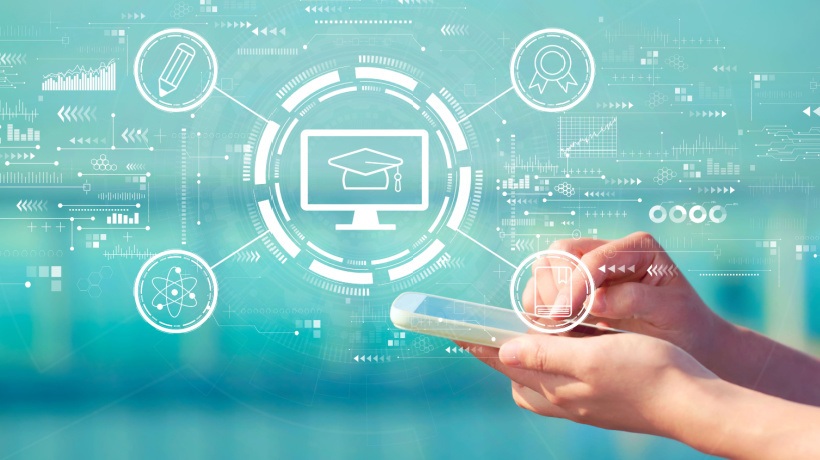Advantages And Challenges Of eLearning In Education
In recent years, the world has witnessed a remarkable transformation in education with the rise of eLearning [1]. eLearning, also known as online learning or digital learning, refers to the process of acquiring knowledge and skills through digital platforms. With advancements in technology and internet accessibility, eLearning has become increasingly popular, revolutionizing the way students and professionals engage with educational content. In this article, I will explore the transformative impact of eLearning and delve into its benefits and challenges.
The world of education has undergone a remarkable transformation in recent years with the advent of eLearning. As technology continues to evolve, traditional classroom settings are being complemented and even replaced by digital platforms that offer new and innovative ways of learning. eLearning, also known as online learning or digital learning, has brought about a paradigm shift in education, offering a plethora of opportunities for learners to acquire knowledge, enhance skills, and engage with educational content in ways that were previously unimaginable.
The Benefits Of eLearning In Education
eLearning offers an array of benefits that contribute to its growing popularity across the globe. One of the most significant advantages is the flexibility it provides. Students and professionals can access learning materials and courses at their convenience, eliminating geographical barriers and time constraints. Whether it's a working professional seeking to upskill during their free time or a student juggling multiple commitments, eLearning allows learners to create a personalized study schedule that fits their lifestyle.
Furthermore, eLearning fosters a self-paced learning environment. Learners can progress through the material at their own speed, catering to individual learning styles and preferences. This self-paced approach empowers learners to delve deeper into complex topics or breeze through familiar concepts, enhancing overall comprehension and retention.
eLearning also fosters a collaborative learning experience. Through online discussion forums, live webinars, and virtual classrooms, learners from diverse backgrounds and locations can engage in meaningful discussions, share insights, and collaborate on projects. This interconnectedness promotes a sense of community and encourages peer-to-peer learning, providing a rich and immersive educational experience.
Challenges In eLearning
While eLearning presents numerous advantages, it also comes with its fair share of challenges. One of the primary concerns is the lack of face-to-face interaction with instructors. Some learners may find it challenging to adapt to virtual communication and prefer the traditional classroom setting for direct engagement with teachers and classmates. To address this, eLearning platforms are incorporating innovative tools such as video conferencing and Virtual Reality to simulate real-time interactions and create a more engaging learning environment.
Another challenge is the need for self-discipline and motivation. eLearning demands a level of self-motivation and accountability, as learners are responsible for managing their study time and progress. Some individuals may struggle with staying focused and disciplined without the physical presence of an instructor. However, eLearning platforms often integrate gamification elements, rewards, and progress tracking to keep learners motivated and on track.
eLearning In Professional Development
Beyond traditional academia, eLearning has also made significant inroads into the realm of professional development. Organizations are leveraging eLearning platforms to train employees, enhance their skills, and keep them updated with industry trends. Professionals can access courses and certifications that contribute to their career growth and advancement, all while balancing work commitments.
Interactive And Engaging Learning Resources
Digital learning environments offer a rich array of interactive and multimedia resources that engage learners and enhance comprehension. Videos, simulations, quizzes, and virtual labs provide hands-on experiences that facilitate a deeper understanding of complex concepts. Gamification elements, such as badges, leaderboards, and rewards, add an element of fun and motivation to the learning process.
Inclusivity And Accessibility
eLearning is a game-changer in promoting inclusivity and accessibility in education [2]. Individuals with physical disabilities, learning differences, or other challenges can access educational content using assistive technologies. eLearning platforms prioritize providing content in various formats, including text, audio, and video, ensuring that diverse learners can engage effectively.
Conclusion
eLearning has undoubtedly transformed the landscape of education, offering a flexible, collaborative, and personalized approach to learning. As technology continues to evolve, eLearning platforms will become even more sophisticated, catering to the diverse needs of learners worldwide.
Whether you are a student seeking to expand your knowledge or a professional looking to upskill, embracing eLearning opens up a world of opportunities and possibilities. With a plethora of platforms and courses available, individuals can embark on a journey of continuous learning, unlocking their full potential in the digital age.
References
[1] India's Digital Leap: The Rise of E-Learning and Computing Devices in Classrooms









